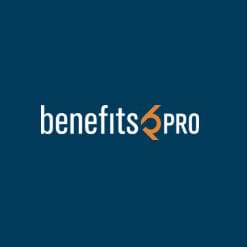In an article published earlier this month, DataPath product manager Chrissy Jurik explored ways in which businesses can use benefits to help support their female employees.
Women and Supportive Employee Benefits
In the wake of Women’s History Month, it is an excellent time to think about how benefits advisors and employers can better support female employees. After all, the rapid rise in women working outside the home was a significant development in labor market history during the second half of the 20th century.
Excluding farm workers and the self-employed, women held just over 50 percent of American jobs by the beginning of 2020. Although that number dipped in response to pandemic-era realities, it has since nearly recovered. But while the number of women in the workforce has grown steadily, our challenges have remained much the same.
Let’s look at three types of workplace challenges that affect women in particular, and how a few different benefit plans and strategies can help address those challenges.
Women and caregiving
Nearly three-fourths (73%) of all employees hold some unpaid caregiving responsibility for an elderly, sick, or disabled person, and 75% of caregivers are women. The demands of caregiving can lead to significant emotional, physical, and financial stress. Yet, an overwhelming majority of employees (79%) do not have access to caregiver support benefits at their workplaces – and partly as a result, caregiving has become second only to retirement as the most common reason people leave the workforce.
Dependent care flexible spending accounts (DCFSAs) can help make paid assistance with caregiving responsibilities more affordable by eliminating payroll taxes on funds set aside for that purpose. Qualified expenses include care for children up to age 13 and for adult tax dependents who cannot care for themselves while the employee is at work.
Lifestyle spending accounts (LSAs) help employees access products, services, and activities that improve overall well-being, including physical, mental, emotional, and financial health. Employers fund these post-tax accounts and determine which expenses are eligible. Qualified expenses that may prove helpful to caregiving employees include sleep and meditation apps, entertainment streaming services, financial planning courses, and more.
Health care benefits
On average, American women spend $15.4 billion more than men each year in health care costs for deductibles, coinsurance, and out-of-pocket maximums. The gap between women and men is about 20%, or 18% if excluding pregnancy-related spending. This discrepancy holds for women from ages 19 to 64 and averages $266 per person.
Flexible spending accounts (FSAs) save individuals about 30% in payroll taxes on the amount set aside for eligible healthcare expenses. Women with $1,000 in out-of-pocket health care expenses could potentially make up for the $266 average annual spending gap through FSA tax savings alone.
Health savings accounts (HSAs) offer even more tax savings than FSAs since contributions, interest, investment income, and withdrawals for eligible expenses are all tax-free. However, the employee must simultaneously enroll in a qualifying high-deductible health plan to open or contribute to a health savings account. HSA funds remain the employee’s property regardless of employment or insurance status.
LSAs (LSAs) can also help in this area by including expenses designed to encourage good nutrition, physical fitness, and more.
Retirement
According to TIAA, working women accumulate 30% less in retirement savings on average than working men, thanks partly to persistent wage gaps and caregiver career breaks. That makes employer matching for 401(k) contributions an especially important and valuable benefit.
The versatile HSA can also play a role in retirement savings. Just like 401(k) accounts, HSA funds earn tax-free interest and investment gains, and funds withdrawn after age 65 for reasons other than qualified medical expenses are taxed like regular income. Also, employers can contribute to employee HSAs just like they do 401(k) accounts.
However, where 401(k)s can’t compare is that funds withdrawn from an HSA for qualified medical expenses remain tax-free – regardless of the amount withdrawn or the account owner’s age at the time of withdrawal. For many employees, this can make a critical difference in long-term financial health.
Final thoughts
Despite making up just over half of the U.S. labor force, women face more challenges than their male counterparts in areas such as caregiving, health care costs, and saving for retirement. By offering even a few targeted benefit accounts, employers and their benefits advisors can provide much-needed support resources to help attract and retain women workers.
(Originally published on BenefitsPRO.com, May 1, 2024.)
For 40 years, DataPath has been a pivotal force in the employee benefits, financial services, and insurance industries. The company’s flagship DataPath Summit platform offers an integrated solution for managing CDH, HSA, Well-Being, COBRA, and Billing. Through its partnership with Accelergent Growth Solutions, DataPath also offers expert BPO services, automation, outsourced customer service, and award-winning marketing services.


